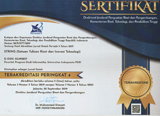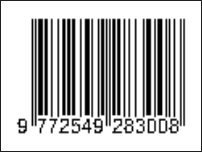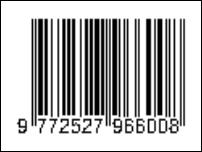Perbandingan Akurasi Pengukuran Sensor LM35 dan Sensor DHT11 untuk Monitoring Suhu Berbasis Internet of Things
(1) Universitas Bumigora
(2) Institut Teknologi Nasional Malang
(3) Universitas Negeri Surabaya
(*) Corresponding Author
Abstract
Temperature is an object of research that is often studied. Research on temperature is within the scope of control and monitoring. The process of controlling and monitoring temperature is influenced by the selection of the right temperature sensor. The temperature sensors that are often used are the LM35 sensor and the DHT11 sensor. The LM35 sensor has advantages in terms of a simple design and easy to implement, while the DHT11 sensor has the advantage because in one sensor package there are two functions, namely to measure air temperature and humidity. In this study, temperature measurement accuracy was carried out to facilitate researchers in determining the right temperature sensor. The data monitoring method uses the internet of things (IoT). The results of the research show that the DHT11 temperature sensor is more accurate and more stable than the LM35 temperature sensor. The results of the sensor test at room temperature, the DHT11 sensor has an accuracy rate of 97.21% while the LM35 sensor has an accuracy rate of 96.86%. While the results of the sensor test in the server room, the DHT11 sensor has an accuracy rate of 95.26%, while the LM35 sensor has an accuracy rate of 90.32%.
Keywords
Full Text:
PDFReferences
Y. A. Kurnia Utama, “Perbandingan Kualitas Antar Sensor Suhu dengan Menggunakan Arduino Pro Mini,” e-NARODROID, vol. 2, no. 2, pp. 145–150, 2016, doi: 10.31090/narodroid.v2i2.210.
G. D. Ramady, “Perancangan Model Simulasi Sistem Pengendali Suhu Ruang Kelas Berbasis Internet Of Things,” SENASTER" Seminar Nasional Riset Teknologi …, 2020, [Online]. Available: https://jurnal.untidar.ac.id/index.php/senaster/article/view/2745.
A. Faizah, P. H. Saputro, and R. A. J. Firdaus, “Pemanfaatan Microcontroller Arduino Uno Untuk Sistem Monitoring Suhu Dan Kelembaban Kumbung Jamur Tiram,” Inovate, vol. 04, pp. 1–8, 2019.
Ritzkal, A. Goeritno, K. A. M. Aziz, A. E. K. Pramuko, and A. H. Hendrawan, “Implementasi Sistem Kontrol Berbasis Mikrokontroler Arduino Uno R3 Untuk Sistem Penetasan Telur Ayam,” Seminar Nasional Inovasi Dan Aplikasi Teknologi Di Industri 2017, pp. 1–10, 2017.
A. Budiyanto, G. B. Pramudita, and S. Adinandra, “Kontrol Relay dan Kecepatan Kipas Angin Direct Current (DC) dengan Sensor Suhu LM35 Berbasis Internet of Things (IoT),” Techné?: Jurnal Ilmiah Elektroteknika, vol. 19, no. 01, pp. 43–54, 2020, doi: 10.31358/techne.v19i01.224.
M. Electronics, “DHT11 Humidity & Temperature Sensor,” in Datasheet, pp. 1–10.
M. Wardhani, S. Hadi, and J. Budiarto, “Rancang Bangun Sistem Monitoring Suhu dan Kelembaban Udara Berbasis Wireless Sensor Network,” Jurnal Teknologi Terpadu, vol. 9, no. 2, pp. 115–125, 2021.
S. Siregar and M. Rivai, “Monitoring dan Kontrol Sistem Penyemprotan Air untuk Budidaya Aeroponik Menggunakan,” Jurnal Teknik ITS, vol. 7, no. 2, pp. 380–385, 2018, doi: 10.12962/j23373539.v7i2.31181.
A. H. Saptadi, “Perbandingan Akurasi Pengukuran Suhu dan Kelembaban Antara Sensor DHT11 dan DHT22 Studi Komparatif pada Platform ATMEL AVR dan Arduino,” Jurnal Informatika,Telekomunikasi dan Elektronika, vol. 6, no. 2, pp. 49–55, 2015, doi: 10.20895/infotel.v6i2.73.
I. K. A. S. Sawita, I. W. Supardi, and I. G. A. Putra Adnyana, “Alat Monitoring Suhu Melalui Aplikasi Android Menggunakan Sensor LM35 dan Modul SIM800L Berbasis Mikrokontroler ATMega16,” Buletin Fisika, vol. 18, no. 2, p. 58, 2017, doi: 10.24843/bf.2017.v18.i02.p03.
T. Budioko, “Sistem Monitoring Suhu Jarak Jauh Berbasis Internet of Things Menggunakan Protokol MQTT,” Seminar Riset Teknologi Informasi (SRITI), vol. 8, pp. 353–58, 2016.
Texas Instruments, “LM35 Precision Centigrade Temperature Sensors,” 2017. [Online]. Available: www.ti.com.
I. N. S. Kumara, “Pembangkit Listrik Tenaga Surya Skala Rumah Tangga Urban Dan Ketersediaannya Di Indonesia,” Majalah Ilmiah Teknologi Elektro, vol. 9, no. 1, 2010.
W. Nudian, M. Dede, M. A. Widiawaty, Y. R. Ramadhan, and Y. Purnama, “Pemanfaatan Sensor Mikro DHT11-Arduino untuk Monitoring Suhu dan Kelembaban Udara,” Seminar Nasional?: Pertemuan Ilmiah Tahunan-Ilmu Lingkungan 2019., pp. 1–13, 2020, doi: 10.31219/osf.io/6skfw.
P. A. Wulandari, P. Rahima, and S. Hadi, “Rancang Bangun Sistem Penyiraman Otomatis Berbasis Internet of Things Pada Tanaman Hias Sirih Gading,” Jurnal Bumigora Information Technology (BITe), vol. 2, no. 2, pp. 77–85, 2020, doi: 10.30812/bite.v2i2.886.
M. I. Hakiki, U. Darusalam, and N. D. Nathasia, “Konfigurasi Arduino IDE Untuk Monitoring Pendeteksi Suhu dan Kelembapan Pada Ruang Data Center Menggunakan Sensor DHT11,” Jurnal Media Informatika Budidarma, vol. 4, no. 1, p. 150, 2020, doi: 10.30865/mib.v4i1.1876.
A. Sanaris and I. Suharjo, “Prototype Alat Kendali Otomatis Penjemur Pakaian Menggunakan NodeMCU ESP32 Dan Telegram Bot Berbasis Internet of Things ( IOT ),” Jurnal Prodi Sistem Informasi, no. 84, pp. 17–24.
A. D. Pangestu et al., “Sistem Monitoring Beban Listrik Berbasis Arduino NodeMCU ESP8266,” Jurnal Ampere, vol. 4, no. 1, pp. 187–197, 2019.
DOI: http://dx.doi.org/10.30998/string.v6i3.11534
Refbacks
- There are currently no refbacks.
Copyright (c) 2022 Sirojul Hadi, Radimas Putra Muhammad Davi Labib, Parama Diptya Widayaka

This work is licensed under a Creative Commons Attribution 4.0 International License.
STRING (Satuan Tulisan Riset dan Inovasi Teknologi) indexed by:

Ciptaan disebarluaskan di bawah Lisensi Creative Commons Atribusi 4.0 Internasional.
View My Stats

 Sertifikat Akreditasi
Sertifikat Akreditasi
















